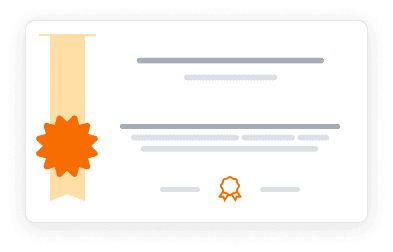This course is part of Interaction Design.
This course cannot be purchased separately - to access the complete learning experience, graded assignments, and earn certificates, you'll need to enroll in the full Interaction Design Specialization program. You can audit this specific course for free to explore the content, which includes access to course materials and lectures. This allows you to learn at your own pace without any financial commitment.
4.5
(159 ratings)
4,907 already enrolled
Instructors:
English
پښتو, বাংলা, اردو, 2 more
What you'll learn
Apply user research methods in real-world contexts
Develop and test interactive prototypes
Conduct effective usability evaluations
Implement A/B testing for design validation
Create professional design documentation
Build a compelling portfolio piece
Skills you'll gain
This course includes:
2.3 Hours PreRecorded video
8 peer reviews
Access on Mobile, Tablet, Desktop
FullTime access
Shareable certificate
Closed caption
Get a Completion Certificate
Share your certificate with prospective employers and your professional network on LinkedIn.
Created by
Provided by

Top companies offer this course to their employees
Top companies provide this course to enhance their employees' skills, ensuring they excel in handling complex projects and drive organizational success.





There are 10 modules in this course
This capstone project enables students to apply their interaction design skills in a comprehensive redesign project. Working with real-world design challenges from Silicon Valley companies, learners progress through the complete design process from needfinding to final implementation. The course covers participant observation, ideation, prototyping, heuristic evaluation, user testing, and A/B testing. Students develop a polished portfolio piece while receiving peer feedback at each stage of the design process.
Design Thinking Capstone
Module 1 · 24 Minutes to complete
Needfinding
Module 2 · 2 Hours to complete
Ideation
Module 3 · 1 Hours to complete
Prototype
Module 4 · 3 Hours to complete
A Plan & a Skeleton
Module 6 · 4 Hours to complete
Ready for Testing
Module 7 · 5 Hours to complete
Test your prototype
Module 8 · 4 Hours to complete
Results!
Module 9 · 6 Hours to complete
Show & Tell
Module 10 · 3 Hours to complete
Fee Structure
Individual course purchase is not available - to enroll in this course with a certificate, you need to purchase the complete Professional Certificate Course. For enrollment and detailed fee structure, visit the following: Interaction Design
Instructor
Leading Expert in Human-Centered Design and Professor at UC San Diego
Scott Klemmer is a distinguished Professor of Cognitive Science and Computer Science & Engineering at the University of California, San Diego (UCSD), where he also serves as the co-founder and Associate Director of the Design Lab. Prior to his tenure at UCSD, he was an Associate Professor of Computer Science at Stanford University, where he co-directed the Human-Computer Interaction Group. Klemmer's research focuses on human-centered design and interaction, and he is known for his contributions to open-source design tools and curricula that are utilized by organizations worldwide. He played a pivotal role in introducing peer assessment in online education, having taught the first peer-assessed online course.With a robust academic background, including a dual BA in Art-Semiotics and Computer Science from Brown University and an MS and PhD in Computer Science from UC Berkeley, Klemmer has authored over 40 peer-reviewed articles, receiving multiple awards for his work in Human-Computer Interaction (HCI). His influence extends beyond academia; many of his former graduate students have become leading figures in their fields. Klemmer's commitment to advancing design education is evident through his courses on Coursera, such as "Human-Centered Design: an Introduction" and "User Experience: Research & Prototyping," aimed at equipping learners with essential skills in design principles and methodologies.
Testimonials
Testimonials and success stories are a testament to the quality of this program and its impact on your career and learning journey. Be the first to help others make an informed decision by sharing your review of the course.
Frequently asked questions
Below are some of the most commonly asked questions about this course. We aim to provide clear and concise answers to help you better understand the course content, structure, and any other relevant information. If you have any additional questions or if your question is not listed here, please don't hesitate to reach out to our support team for further assistance.



